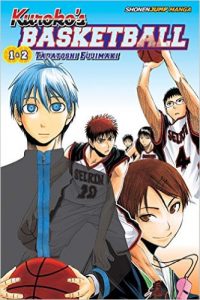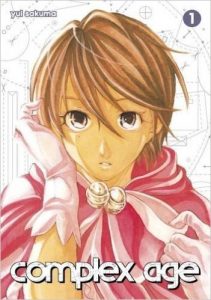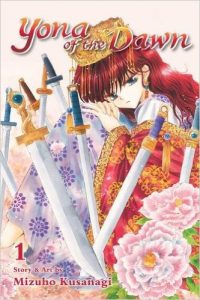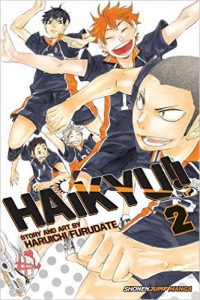Kuroko’s Basketball Volumes 1 and 2 by Tadatoshi Fujimaki
I enjoy a good sports manga, and this omnibus of the first couple volumes of Kuroko’s Basketball was entertaining, due to a unconventional protagonist.
The manga opens with a bit of a prologue discussing an unbeatable team at Teiko Middle School that was split up and scattered as the team members, known as “The Miracle Generation”, all went to different high schools. While five players were the superstars, there were rumors of a shadowy sixth man who was actually the key to the team’s success. Flash forward to the present day at Seirin High School, all the clubs are out in force trying to recruit new members. Taiga Kagami is an intense first-year student with a superior attitude because he played basketball in the United States who signs up for the club. Tetsuya Kuroko, an unassuming student who formerly attended Teiko signs up for basketball as well.
Taiga is drawn to look a bit like Hanamichi from Slam Dunk, and while both characters share a brash personality and an abundance of natural talent, Taiga isn’t as idiotic as Slam Dunk’s protagonist. The fact that the manga is called Kuroko’s Basketball is a signal that the stereotypical idea of who the hero is in sports manga is going to be subverted a little bit. It turns out that Kuroko has a unique talent of appearing invisible when he’s playing basketball, which turns into an incredible advantage for the Seirin team, as he’s constantly overlooked and underestimated, only to make key passes and plays for all the other players on his team.
Kuroko’s unassuming nature is often played for laughs, as he frequently seems to pop out of nowhere when he’s just overlooked. His talent doesn’t come without a lot of hard work, as when he’s actually playing a game he is paying such close attention to everyone around him and adjusting in response to opposing players, that he can’t log a significant amount of minutes devoted to basketball invisibility without becoming exhausted. The first couple volumes shows the Seinen team coming together under their bossy girl coach Riko. She begins to get a sense that with Kuroko and Taiga on the team, she may be able to build the Seirin team into something special.
I feel like after reading Slam Dunk, the art for any other basketball manga is going to suffer in comparison, especially because as Slam Dunk wrapped up the art was so glorious. But comparing other manga artists to Inoue is like comparing people to Kirby, just fundamentally unfair. So I suffered a few involuntary pangs of wanting some mindblowing basketball action paneling in Kuroko’s Basketball, but on the whole, it was easy to follow all the action in the basketball games, and Kuroko’s deadpan expression is used effectively to provoke a variety of reactions in his teammates.
As this omnibus volume was wrapping up, a tournament style struggle is set up, with the Seiran team placed in a position where they are going to have to face off against other high school teams, each with a standout player from the Miracle Generation. Kuroko is now playing only for the love of the game, he comments that he didn’t want to play with anyone from his former team because they were so focused on winning at all costs, they weren’t truly appreciating basketball. The dynamic that will be explored in future volumes is if Kuroko’s abilities combined with his new team will actually mean that the sixth man will emerge triumphant. I have to say I’m very happy that with Kuroko’s Basketball, Haikyuu!!, and Yowamushi Pedal (which I haven’t read yet), there is a bumper crop of sports manga coming out in English right now.




Recent Comments